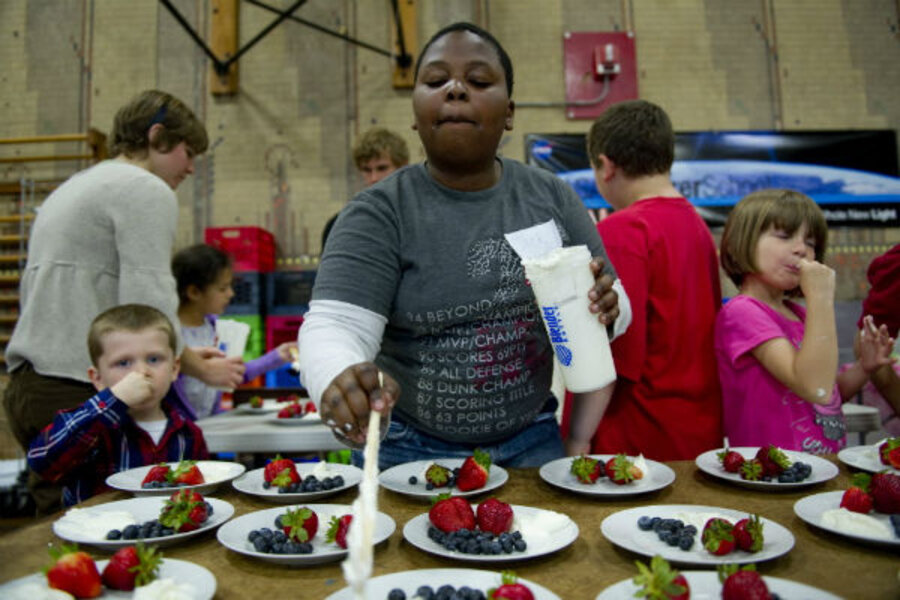Family dinner: Can you teach a tradition?
Loading...
| Lynn, Mass.
The iconic American family dinner may look very right and natural as portrayed on TV (think Mrs. Cleaver's casserole) and in art (think Norman Rockwell's "Freedom from Want").
But for some households, a family dinner is an improbable and unrealistic occurrence.
In the Boston area, one organization is trying to change that by modeling the tradition. The Family Dinner Project – a grass-roots organization that bills itself as a "movement of food, fun and conversation about things that matter" – aims to promote the benefits of the family dinner and connect families with the resources they need to start a family dinner tradition of their own.
PHOTO GALLERY: The great American family dinner
"We're trying to orient kids to a meal, to interest them in conversation," says executive director John Sarrouf. "We want everyone to come to the table to be together, to communicate, to ask questions of each other, to have fun, and to make memories."
Many researchers say that families who break bread together regularly may have lower rates of underage substance abuse, teen pregnancy, depression, and problems in school. So the project holds outreach programs promoting the dinner concept at local schools.
At one such event – held recently at the Robert L. Ford School in an impoverished area of Lynn, Mass. – volunteers set up a half-dozen cafeteria tables, each set with real flatware and plates, and candles. As families trickled in, the kids were invited to make centerpieces using flowers and rocks.
As one little boy in bright plaid manhandled a plate of cracker hors d'oeuvres, Mr. Sarrouf attempted a kindly redirect, explaining the etiquette of touching only the thing you want to eat.
Socioeconomic factors can definitely affect the ability of families to set aside time for dinner together, explained Claire Crane, principal at the school, where most students qualify for free lunches. "Most families here ... work two or three jobs," Dr. Crane said. "[F]or some of the families here, this is the first opportunity they have had to do this. When I was a little girl, we ate at 5. We need to go back to that."
Over aluminum trays of lasagna, children chattered and parents talked. Jennifer Paulino brought her two children and three stepchildren to the event without her husband, who had to work. Ms. Paulino looked tired, but happy to be at the dinner. She said she'd recently found a job and was hoping eventually to go back to school. The biggest challenge to dinner in her family is scheduling a time when neither parent is at work, she said.
At another table, Pam Taylor was waging a losing battle against the stubborn tomato sauce adorning her young grandson's face. The mother of six grown kids who now has custody of her three grandchildren, Ms. Taylor suddenly has a new brood to feed.
"But I'm used to having a lot going on," she said. She makes her grandchildren sit down to dinner now. "We make a point of having them sit with us, say grace. The TV goes off. If the phone rings, I just let it ring.... I'm fortunate because I am home, and they're young enough that they can't say, 'I'm taking off to go hang out with friends.' "
PHOTO GALLERY: The great American family dinner
As the evening wound down, children helped clear the plates and clean the tables. Salvatore, age 4, the youngest of Taylor's grandchildren, finally sat still long enough for her to wipe his face. His favorite part of the dinner? Making whipped cream for dessert.





